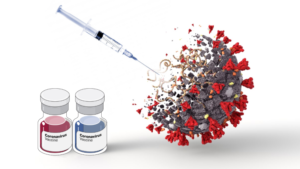Psoriasis is a disease of the skin that causes thick, itchy patches of red skin and silvery scaling. According to Psoriasis.org, this disease impacts just over 3% of adults in America, or over 7.5 million. But why does it occur in the first place? In this blog, we’ll discuss everything you need to know about psoriasis including causes, treatment, and more.

The top two layers of the skin are called the epidermis and dermis. Typically, new cells at the bottom of the epidermis are consistently moving up and replacing the older cells above them over the span of one month. In psoriasis, however, the cells reach the skin surface in just six to eight days. This happens most often as a result of a poor immune system. However, it is also highly common in fair skin people and adults.
How Does Psoriasis Occur?
It is the common belief of scientists that the immune systems of those with psoriasis mistake different natural substances in the skin for foreign invaders. As a result, the immune system performs a counterattack also known as the body’s natural inflammatory response. When this occurs, a series of changes take place within the body, including enlarged and increased amounts of blood cells, an increase of immune cells in the area, and faster new skin cell production. Ultimately, this becomes a cycle that leads to thicker skin with raised, itchy and inflamed patches known as plaque.
In terms of its origins, Healthline explains that while people with no family history of psoriasis can get the disease, having a family member that has the disease does increase your chances. This is the case because the disease can be passed through parts of your DNA. If you’ve recently discovered that you have psoriasis, there are some triggers to consider avoiding, such as:
- Skin injuries like bug bites, etc.
- Dry skin or weather
- Stress
- Infections, such as skin or strep infections
- Smoking
- Certain medications
- Alcohol
Types of Psoriasis

Much like various other skin conditions, there are several different types of psoriasis, each with its own symptoms. Continue reading below to learn more about the various types of psoriasis.
Plaque Psoriasis
Plaque psoriasis is the most common form of this disease. It appears in the form of red, raised patches with a silvery-white buildup of dead skin cells that are often itchy and/or painful. More often than not, it shows up on the scalp, elbows, lower back, and knees. If the patches are allowed to dry to a point of cracking, they can bleed.
Guttate Psoriasis
Guttate psoriasis appears as small dot-like lesions. It is often seen in children and young adults. In addition to the triggers mentioned above, guttate psoriasis is also triggered by strep infections. In all, around 10% of psoriasis-affected people have guttate psoriasis, specifically.
Inverse Psoriasis
Inverse psoriasis appears in the form of red lesions found within the folds of the body. This usually means under the arm, behind the knees, or in the groin. On rare occasions, inverse psoriasis appears smooth and shiny.
Pustular Psoriasis
Pustular psoriasis is characterized by white pustules or blisters filled with non-infectious pus. Furthermore, it is often surrounded by red skin and tends to show up on any part of the body. Most commonly, however, it presents on the hands and feet.
Erythrodermic Psoriasis
This is a severe form of psoriasis that results in an extensive fiery redness that spreads all over most of the body. Its most notable symptoms include cause severe itching and pain.
Symptoms of Psoriasis

If you suffer from regular skin irritation and think you may have psoriasis, you must understand the disease’s most common symptoms. According to NHS, these include:
- One or more raised red skin patches with silver scales on your elbows, scalp, knees, lower back, or buttocks.
- Red skin patches on the eyebrows, armpits, belly, or anus.
- Patches are painful and/or itchy.
- Swollen, painful joints and pus-filled blisters.
- Misshapen, thick, or pitted fingernails.
When is it Time to See a Doctor?
If you suspect you may have psoriasis or some other skin condition, any time is a good time to consult a physician. Because with the right treatment, you no longer have to suffer. Naturally, if the suspected psoriasis is evolving severely or widespread, the sooner you can see a doctor the better. This is especially true if you are experiencing pain, discomfort, changes in the skin, or joint problems. Once you are diagnosed, your doctor will prescribe medication either in pill or topical form to be used as directed.
Take Charge of Your Health with 24-7Labs

If you’re concerned and would like to learn more about your health in the Tampa area, 24-7Labs has you covered. With an array of convenient, flexible testing services available on your schedule, we make it easy to prioritize your health as you see fit. Contact us today to learn more.



